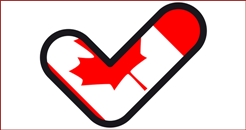 Participatory Budgeting - an example
Participatory Budgeting - an example
Participatory Budgeting is a democratic process in which community members directly decide how to spend part of a public budget. See blog which explains further here.
As an example, the Government of Ontario recently requested ideas from the public to help solve a problem in one of 5 focus areas. These ideas were shortlisted and voted on by the public. The Government will now spend CAN$5M on 5 of them from the 2018 budget.
The process was as follows:
Phase 1: Idea submissions from the public.
Phase 2: Submission review. 82 ideas were determined to have met the submission criteria.
Phase 3: Live events to present the ideas by the public. 13 projects were selected in public workshops for public voting.
Phase 4: Public voting to determine a final shortlist of projects.
The winning ideas - those that received the most votes and will be implemented were announced in the 2018 Budget. They will spend up to CAN$5 million bringing up to five ideas to life.
What were the submission criteria for ideas?
An idea must:
-
not ask for funding for an individual, group, organization, company and/or business
-
help solve a problem in one of 5 focus areas
-
be submitted by midnight on 17 November 2017.
-
be a proposal for a new fund, pilot, study, event or digital service and not cost more than $1 million
-
be within the scope of the Ontario government to deliver
-
start or be finished by spring 2019
The submission, via a website with lots of guidelines, must include; the idea, how it would work and which problem it might solve, who needs to be involved, when and where it should happen. Other important information or research, including; links to background material that others can use to better understand your idea, evidence for your idea and its effectiveness, examples of similar initiatives in other places.
Ideas for public vote
As stated before, towards the end of the process, 13 projects were selected in public workshops for public voting. These were:
Healthy Living
Food education for kindergarten and elementary students
Increase access to support for people with Autism
Increase access to healthy food in Northern Ontario
Increase mental health programs for students
Online mental health support for Aboriginal youth
Research study to reduce food waste from retailers
Supervised housing for people with mental health issues
Temporary mental health support clinics
Seniors
Preserve the stories of Ontario’s seniors
Seniors provide reading and writing support for students
Small Businesses
Cargo cruisers to deliver the goods of small businesses
Student Success
Edible garden program in elementary schools
Earlier introduction of French language classes to students
How they arrived at the final list
Over three weekends, 95 local citizens discussed and assessed ideas at in-person workshops in 4 different areas of Ontario. Panels of up to 28 for each workshop were recruited from the pool of registered users on the ideas site who said they were interested in participating further. The Government made sure that these panels were representative of Ontario’s population, and that nobody faced barriers to participating. For a full day, panelists discussed and considered ideas that others had submitted online. Their recommendations produced the list that was put forward for a final public vote.
How panelists made their recommendations
The Government wanted to make sure people had time to read, think and discuss ideas before coming to their final recommendations. Each workshop reviewed a list of 82 ideas that had been determined to meet the submission criteria. The panelists' job was to help prioritize these ideas and help whittle them down to a shortlist for public voting. Panelists were asked to agree on how ideas would be evaluated on three criteria; inclusivity, reach - number impacted, and importance to the local population.
They organized panelists into small groups to read and discuss each idea, agreeing on ratings for each. Each small group had to evaluate a quarter of all the ideas. Once they had counted their scores, each group presented their top ideas to the larger group. They shared their thoughts on why they rated these ideas highest against the three criteria.
Everyone in the room was given ten stickers which they could use to vote for the ideas they think should proceed to the next stage. All the top ideas from the tables were put up on the wall for people to read and consider.
At the end of the workshops in the four cities, the Government tallied the votes and sorted the ideas from most to least votes. They then selected the final list for voting from among the top 16 ideas recommended by the panelists.
The Government deemed these final ideas to be consistent with the submission criteria and with the government’s priorities. The Government also took regional preferences into account when creating the top list.
Voting
Public voting ran for 2 weeks in January 2018.
The winning 5 projects were:
-
Increase mental health programs for students. This idea got 1,670 votes and will receive a one-time investment of CAN$1 million.
-
Edible garden program in elementary schools. This idea got 1,448 votes and will receive a one-time investment of CAN$1 million.
-
Increase access to healthy food in Northern Ontario. This idea got 1,407 votes and will receive a one-time investment of CAN$1 million.
-
Housing for people with mental health issues. This idea got 1,267 votes and will receive a one-time investment of CAN$1 million.
-
Research study to reduce food waste from retailers. This idea got 1,210 votes and will receive a one-time investment of CAN$1 million.
What a great way of involving people in solving the real problems they perceive in their communities.
Retweet about this article:
Geoff Knott, 10/04/2018